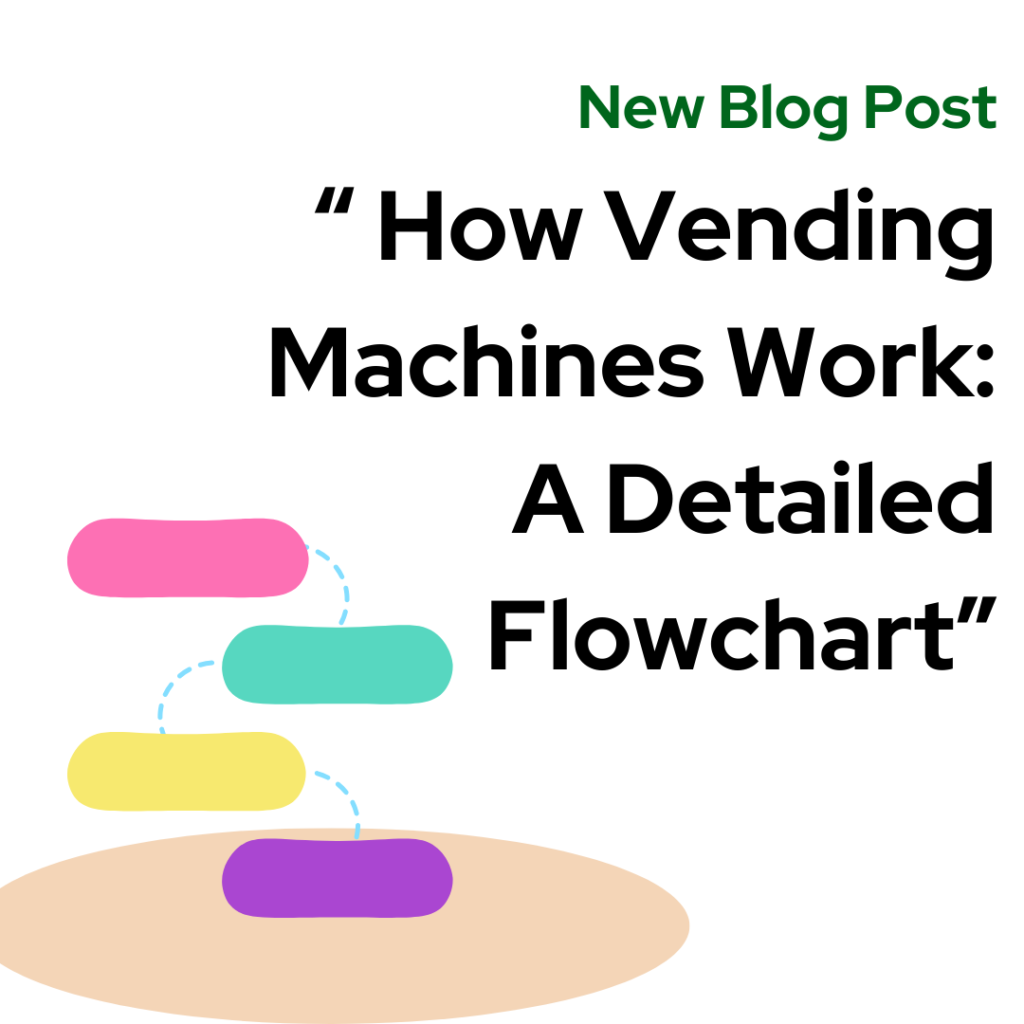
Understanding the inner workings of vending machines can provide insights into their efficiency and reliability. This blog post presents a detailed flowchart explaining how vending machines operate.
The Basic Components
- Payment System: Accepts various forms of payment (coins, notes, cards, mobile payments).
- Control System: The machine’s “brain,” managing transactions, inventory, and dispensing.
- Storage and Dispensing System: Holds products and dispenses them upon purchase.
- User Interface: Allows customers to make selections and complete transactions.
Step-by-Step Operation Flowchart
- Payment Insertion:
- Customer inserts payment (coins, notes, or card).
- Payment system validates and records the payment.
- Selection Process:
- Customer selects a product using the keypad or touchscreen.
- Control system verifies the availability of the selected item.
- Payment Verification:
- Control system checks if the inserted payment covers the cost of the selected item.
- If sufficient, the transaction proceeds; if not, the customer is prompted to add more payment.
- Product Dispensing:
- Control system activates the dispensing mechanism.
- Product is released from storage and delivered to the dispensing area.
- Change Dispensing (if applicable):
- If the customer inserted more payment than the item’s cost, the machine dispenses change.
- Completion:
- Transaction is recorded for inventory and sales data.
- Customer retrieves the product and any change.
Advanced Features
- Cashless Payments: Integration of credit card and mobile payment options.
- Remote Monitoring: Allows operators to track inventory and sales data in real-time.
- Energy Efficiency: Modern machines use energy-efficient components to reduce power consumption.
The operation of vending machines is a complex yet efficient process managed by sophisticated systems. This flowchart provides a clear understanding of how these machines function, from payment insertion to product dispensing.




